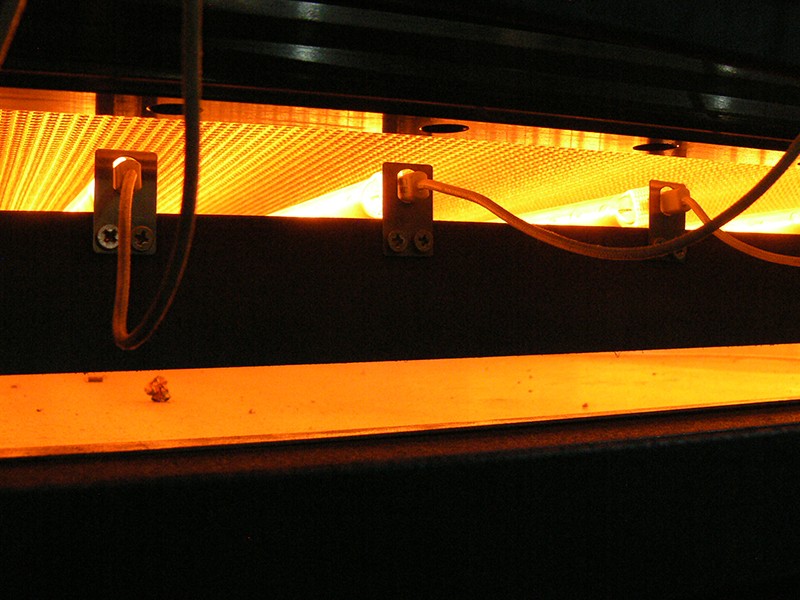
Laminated glass is a composite safety glass made by bonding two or more pieces of glass together with one or more layers of organic polymer intermediate films (PVB, SGP, EVA, PU, etc.).
In the production process of laminated glass, there are mainly the following heating steps:
Before pressing, it is necessary to preheat each pressing layer (glass film glass). After pressing, continue heating to achieve the final bonding of the laminated glass. Glass and film first need to be heated to achieve initial bonding, and a certain heating temperature should be reached, and the temperature should be adjustable and controllable. During this process, it is necessary to continuously heat the large area of glass.
During the pressing process, it should be ensured that the glass is uniformly heated, and the temperature difference on the glass surface should not exceed 5 degrees.
During the cutting process, it is necessary to heat the film in the glass interlayer, mainly PVB film, to scratch and cut the glass.
During the heating process, it is necessary to:
Temperature adjustable and controllable
Large area, high intensity, continuous, uniform heating
Mainly for heating the membrane in the interlayer, rather than glass
Infrared heating is a type of radiation heating. This radiation heating method heats the surface of an object and a certain depth in a targeted and direct manner with matching wavelengths and selective penetration, making it a highly efficient heating method. The wavelength radiated by different filament temperatures is different. Divided by wavelength, it can be divided into short wave, medium wave, and long wave infrared radiators.
Every object absorbs energy of a specific wavelength. Thin materials, such as thin films, are difficult to heat with short waves because only a small portion of the short wave matches its absorption spectrum. In contrast, medium waves can effectively heat thin films, so at the same power, medium waves can heat plastic films faster than short waves. To improve thermal efficiency, it is necessary to align the radiation wavelength of the infrared radiator with the absorption wavelength range of the heated material.
For the deep processing of laminated glass, the absorption rate of the glass at an infrared wavelength of 2.4 µ m is only about 25%, while the absorption efficiency of PVB film for infrared at this time reaches 90%, which means that energy can be efficiently absorbed by the film, and only a small part is absorbed by the glass. At this point, it is in the wavelength range of medium wave infrared, making it an ideal wavelength for laminated glass applications.
Our company's medium wave infrared radiator has the following characteristics:
nExtremely long service life
nThe high-quality filament and advanced manufacturing technology enable our company's medium wave infrared radiator to have excellent performance while achieving an extremely long service life. Under normal circumstances, it can last up to 20000 hours
nEnergy saving and high efficiency
nGold-plated reflective coating can directionally radiate heat. Reflectivity reaches 95%, greatly providing thermal efficiency
nNon standard customization is possible
nProcess requirements, equipment dimensions, etc. can be customized, including:
Voltage: 60-480V
Power: 100-20000W
Pipe diameter: single pipe (8MM, 10MM, 12MM, 15MM, 18MM, 20MM)
Double hole tube (11X23MM; 15X33MM)
Length: ≤ 6 m
Reflective coating: gold or white plated
IR ray is a kind of electromagnetic wave. It transmits energy at the speed of light. The energy from the sun mostly transmits by it. In spectral distributions, ......
Special clip for infrared ceramic head, stainless steel, special clip for high temperature resistant infrared lamp...